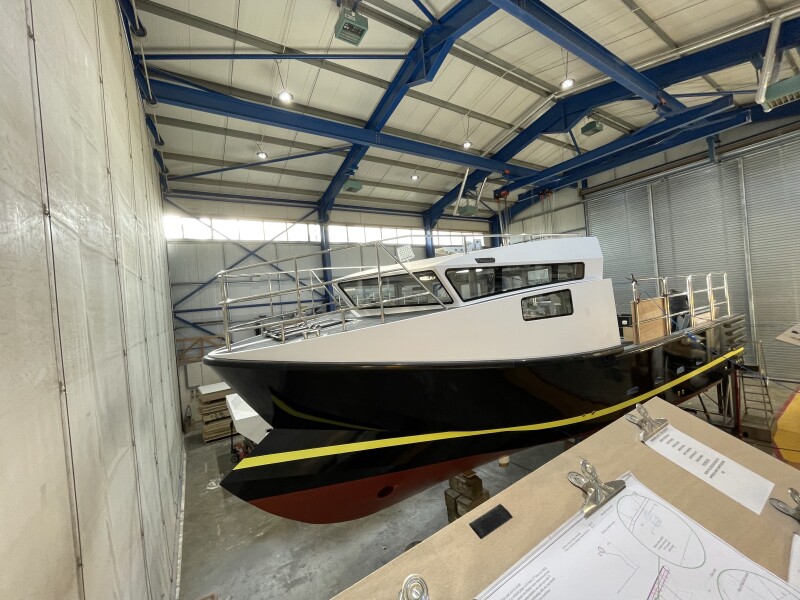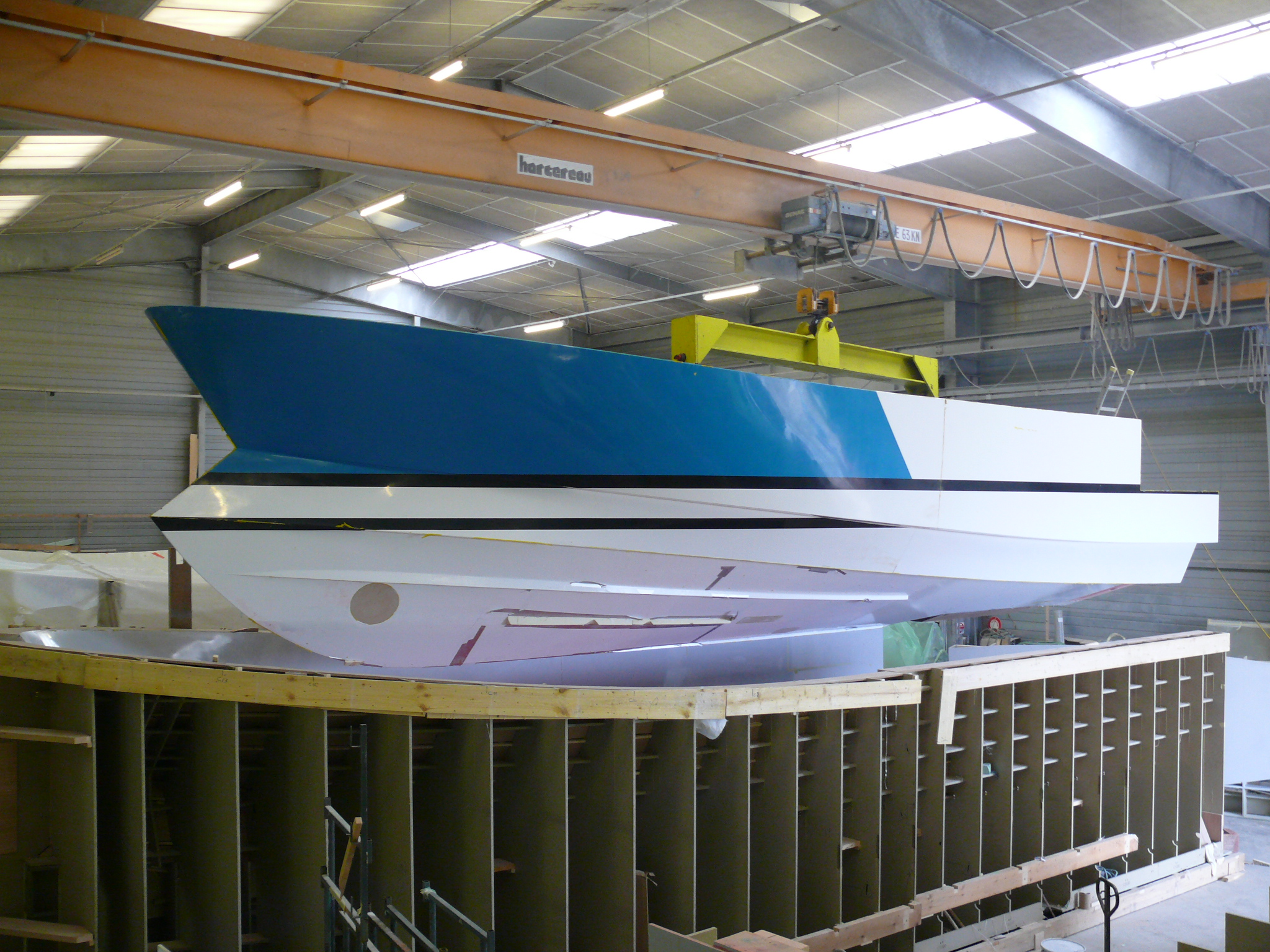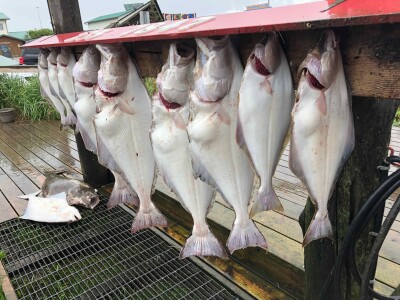When two lobster boats with a unique “beak bow” design showed up in Grand Manan, New Brunswick, they attracted a lot of attention. The Drastic Endeavor, owned by Eric Greene, and the Mass Confusion, owned by Carter Foster, were built at Construction Navale Atlantique, in Caraquet, New Brunswick. They were built with the Rorcal beak bow design from Pantocarene, a naval architecture firm in Arzon, France.
The bow of the Rorcal design angles down and aft from the peak, like a traditional bow, but then flares forward and downward to a point before continuing to the keel like a traditional bow. According to Didier Marchand, owner of Pantocarene, his unique bow design is intended for vessels going at high speeds.
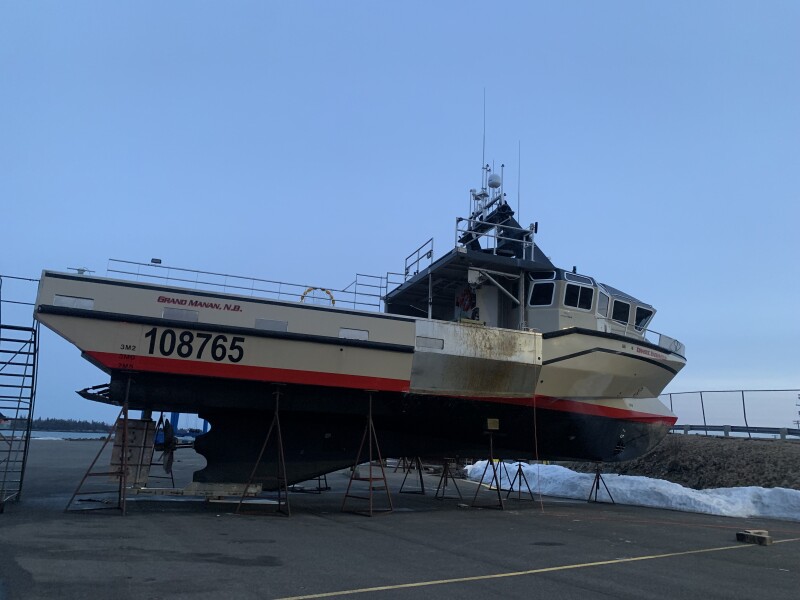
“The design is intended to improve the seakeeping abilities of fast vessels in head seas,” says Marchand. “You have to have trim tabs to keep the trim low - when the vessel hits a wave the beak bow creates negative lift, so you don’t fly off the wave, and more important come down hard. It reduces vertical acceleration so that you are going through the wave.”
The main benefits of the beak hull, Marchand points out, besides the reduction of vertical accelerations in head seas, are a strong reduction of fuel consumption, and far better course keeping in following seas.
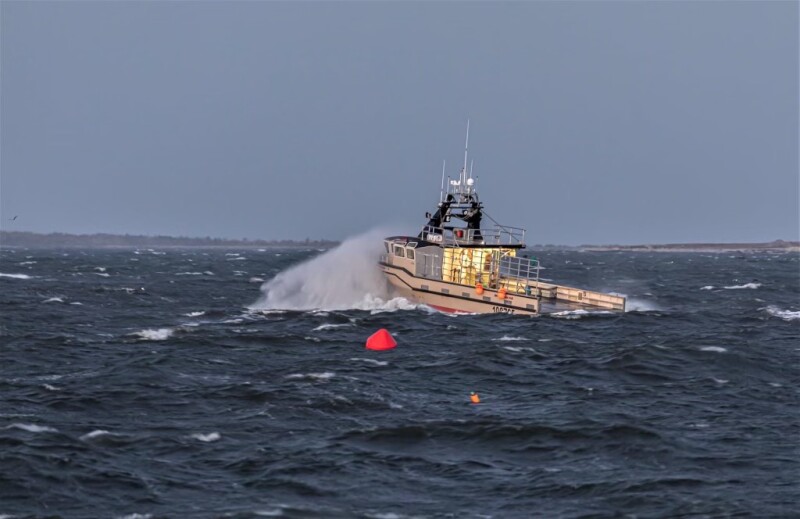
Pantocarene has licensed 240 various iterations of the design to builders in the UK, Australia, Germany, Canada, and elsewhere. Marchand reports that longtime partner, Goodchild Marine in the UK, is booked until 2025 building Pantocarene’s ORC pilot vessels with the beak bow design.
“Most of our boats are pilot boats,” says Marchand. “Besides their sea-keeping ability, some of our customers have seen a 30 percent fuel savings — going 27 knots. That is over what they burned previously at 22 knots. These boats can go twice the speed of conventional boats in 4 to 5-meter seas (13 to 16-feet).”
“They are rugged boats,” says Eastport, Maine pilot Bob Peacock. “The French pilots I know like their seaworthiness very much.”
With lessons learned from its ORC pilot boats, Pantocarene has also designed a family of Rorcal fishing vessels, which are being used all over the world. “Of course, these fishing vessels are not going to work in 4 to 5-meter seas,” says Marchand. “But we do have some fast fishing boats,” says Marchand. “There is a 12-meter gillnetter in Lorient (a French port in Brittany) that goes 28 knots. It has two, 600-hp Cummins.”
Since its introduction in the mid-1990s the Rorcal hull design has been used in a wide range of fishing boat types along with pilot and patrol boats and small ferries, all with the characteristic beak bow — also called a polyhedral bow or rostrum.
Goodchild is also building a Rorcal fast fishing boat. “They started it last year and I believe they might exhibit it at Seawork [https://seawork.com] in June,” says Marchand. He adds that a Seattle fisherman expressed interest in building one of Pantocarene’s Rorcal vessels in aluminum, but the pandemic interrupted that project. While he has modified the Rorcal 121 design for a French fisherman building the boat in aluminum, Marchand favors fiberglass for these vessels. “But the right hull material should be chosen according to each project and to its local context,” he says.
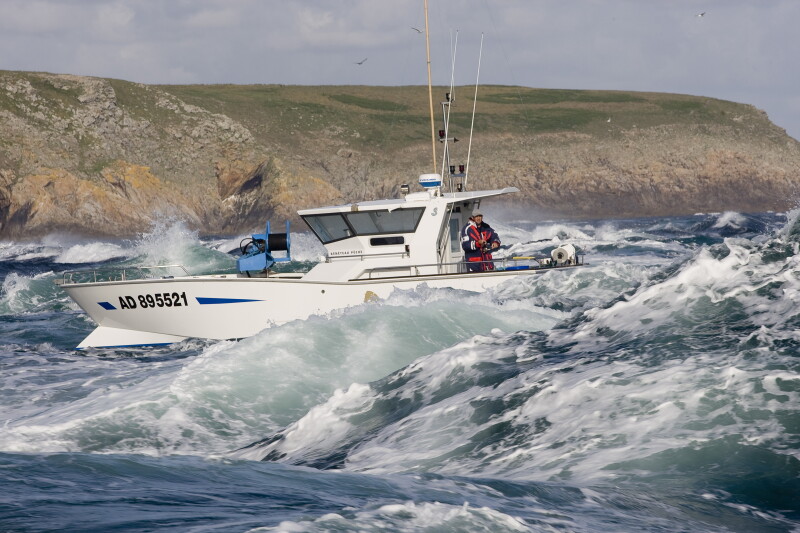
As Marchand tells it, the evolution of the beak hull began in 1990 when he designed its precursor and clients noticed much better trim. “Four years later, I started to work on the beak hull when a Saint Nazaire pilot asked me if I would be able to design a new hull that could, on one hand, cancel the limit in speed and the terrible behavior in following seas of semi-displacement hulls, and, on the other hand, avoid the terrible sea keeping in head seas of conventional planing hulls.” With that goal, Marchand built a model that he tank tested, but he couldn’t sell it. “Of course, no one would build it based on a model and testing in a tank. We were able to get a subsidy to build a 17-meter prototype and sell that.”
While Pantocarene has enjoyed long-term success and maintained lengthy relationships with Goodchild in the UK, Hart Marine in Australia, and other yards, Marchand—along with boat owners Greene and Foster—is unhappy with Pantocarene’s North American partner, Construction Navale Atlantique.
“They do whatever they want,” he says. “The vessels have to be built in strict accordance with our drawings and specifications in order to achieve expected weight, location of the center of gravity, performance, and stability - which is not the case at all for CNA builds.”
“I didn’t like the boat at first, it moves different than what I’m used to,” says Canadian lobsterman Eric Greene. “But the more time I spend aboard the better I like it.”
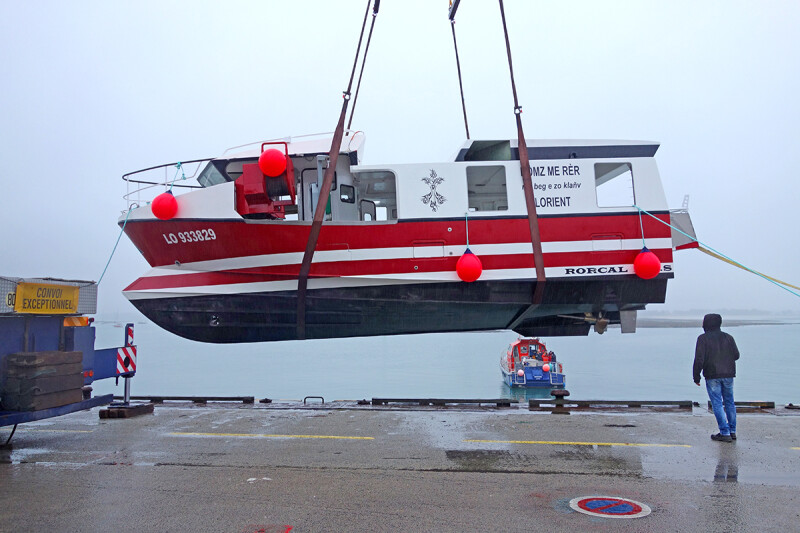
While he is getting used to the boat, Greene expresses dissatisfaction with the vessel’s performance and that of the builder.
“It doesn’t do what I expected,” he says. “I don’t think it was built the way it was designed, and dealing with them [Navale Atlantique] has been a shitshow,” he says. “Carter took his boat back to have some things done and it just sat there. Finally, he brought it back.”
Construction Navale Atlantique has not responded to requests for comment. “At the moment, we don’t have a manager,” said an employee who answered the phone.
Despite the rough start in Atlantic Canada, which the designer and customers attribute to the builder, Marchand still hopes to offer the Rorcal and ORC designs to U.S. fishermen and boatbuilders.
“Before the pandemic, we were looking at coming to Pacific Marine Expo (in Seattle) and WorkBoat in New Orleans,” he says. “I think it’s time to restart that project.”
